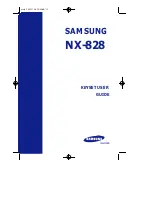
Page
8
01/2007
AMT/PTD/PBX/0062/1/2EN
2.2 DEFINITIONS
DECT
Digital Enhanced Cordless Telecommunications
•
The standard (ETS 300 175) basically specifies the air interface.
Voice and data can both be transmitted via this interface.
•
Its basic technical characteristics are:
•
Frequency range: approx. 1,880 – 1,900 GHz (approximately
20 MHz bandwidth)
•
10 carrier frequencies (1,728 MHz spacing with 12 time slots
each)
•
Doubling the time slot (to 24) using the TDMA process.
•
Net throughput per channel: 32 kbits/s (for voice transmission
using ADPCM)
•
Voice coding using the ADPCM method
•
Maximum transmission power: 10 mW
GAP
Generic Access Profile
•
GAP is the abbreviation for Generic Access Profile.
•
The GAP standard (ETS 300 444) is based on the same
technology as DECT, but is limited to the most important basic
features. This standard was created to allow telephones from
different manufacturers to be used on any type of DECT system.
It is thus the lowest common denominator for the variants of the
DECT standard specific to all the manufacturers.
•
There is an important limitation in the GAP standard: external
handover is not possible. For this reason, connection handover
is used, which is supported by GAP terminals.
•
The operation of GAP-capable telephones is comparable to that
of analogue terminals. For example, features can be called up via
‘*’ and ‘#’ procedures.
Handover
Handover
Handover is similar to roaming, but occurs during an on-going call.
Handover normally takes place without disrupting the call (seamless
handover).
IPEI
International Portable Equipment Identity
•
13-digit identification code for PPs
•
Example: 00019 0592015 3
(the final digit is the checksum).
•
The code is represented in decimal form.
•
This code is globally unique.
PARK
Portable Access Rights Key
Access code for the portable part. This code determines whether or
not a PP can access a specific DECT system. Used for unique
selection of the system at enrolment.
Roaming
Roaming









































